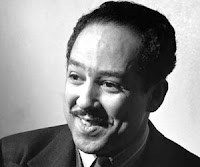This Sunday is our official Destination Freedom Kick Off, a
free afternoon program featuring panel discussions, new exhibits and
entertainment, along with a special talk by Civil Rights activist Diane
Nash. In preparing for Sunday, we had the opportunity to ask several of
the panelists questions surrounding the pivotal moments of the Civil Rights
Movement, their own activism, and what they are looking forward to during the
Destination Freedom Kick Off.
Next up: Elver
Barrios, Community Organizer at the Latin American Coalition
How does Sept. 15,
1963 relate to the causes you are most passionate about? What takeaways have
you gained from the Civil Rights Movement?
Sept. 15, 1963 relates to causes I am passionate about
because of the fact that there has always been people who, for various reasons,
always feared or showed hatred towards others based on their skin color, gender
or other identities. But, the fact that there is always someone that stands up
to fight for what is right gives me courage to see that it might take a while
to make changes. It is never too late to make those changes. I also look at
the sacrifices from this day 50 years ago and think about how in movements for
change sometimes there are sacrifices and losses.
Changing the immigration system is something that I’m really
passionate about since I’m personally affected by the broken immigration
system. I think that the Civil Rights Movement in the 1960’s is much like today
when we are still fighting for a new group of people that are oppressed. I think that if there is something that I
take from the Civil Rights Movement is that perseverance always pays off and
that one person can make a difference if they fight with their heart to make a
difference and work to make some else’s life better.
How do you recall
your activism and any highlights of it?
I think that my activism has impacted in a positive way the
lives of many by encouraging them to join the movement. That together we can
make changes so our undocumented immigrant families can stay together and not
have to be separated. In 2010, when the
fight for the DREAM Act became stronger than ever, I decided to take a stand and
fight for my education along with that of other young people in Charlotte and
challenge our North Carolina Senators to fight for the future of this country.
Although it did not pass, the youth immigrant movement only became stronger!
Today, we have grown from that time and have realized the importance of focusing
not only on ourselves as young people but also on our families.
What are you looking
forward to during the Destination Freedom Kick Off
I think that it is important that we acknowledge that in
this country there has always been a group of people that has been oppressed at
some point in history, and the struggles are very much similar but yet so
different. It takes more than one person to make those changes. During this
event I hope to see people make the connections to what happened in 1963 and today and why it is important to fight not only
for our struggles but also to help others overcome theirs.
Hear more from Mr. Barrios and others at Levine Museum, Sunday, Sept. 15, beginning at 3 p.m.







